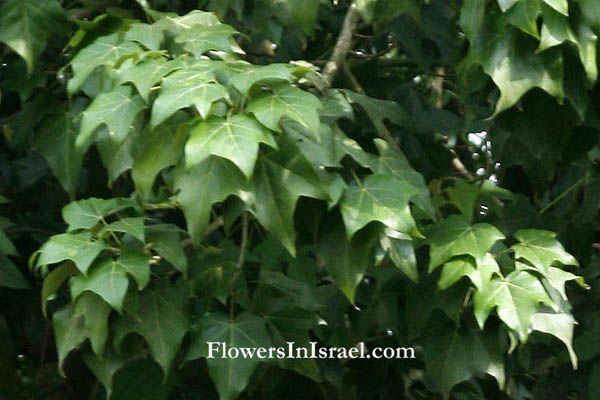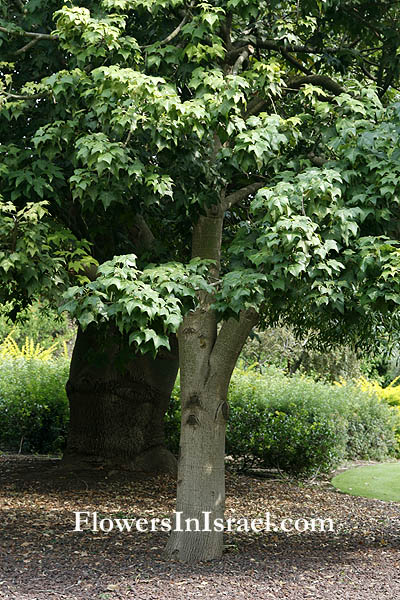ברכיכיטון דו-גוני
| Scientific name: | Brachychiton discolor F.Muell. | |
| Common name: | Lacebark | |
| Hebrew name: | ברכיכיטון דו-גוני | |
| Family: | Malvaceae / Sterculiaceae, סטרקוליים |

|
| Life form: | Tree | |
| Stems: | Up to 30 m high; trunk straight, grey, cylindrical; twigs hairy, brown, smooth | |
| Leaves: | Alternate, margins lobed, 3 to 5 veined from the base, hairless, very variable in shape from entire to 3, 5 or 7 lobed, 9—25 cm diam. | |
| Inflorescence: | Panicles of 18 to 20 cm. at the ends of the branches | |
| Flowers: | Deep pink bell shaped flowers | |
| Fruits: | Clusters of large boat-shaped follicles, 10 to 12cm long, containing numerous oval, yellow seeds | |
| Flowering Period: | Early summer | |
| Origin: | New South Wales to southern Queensland, Australia |

Derivation of the botanical name: Brachychiton, Greek brachys, 'short'; chiton, a 'tunic', a reference to the coating on the seed. discolor, two different colours.
|